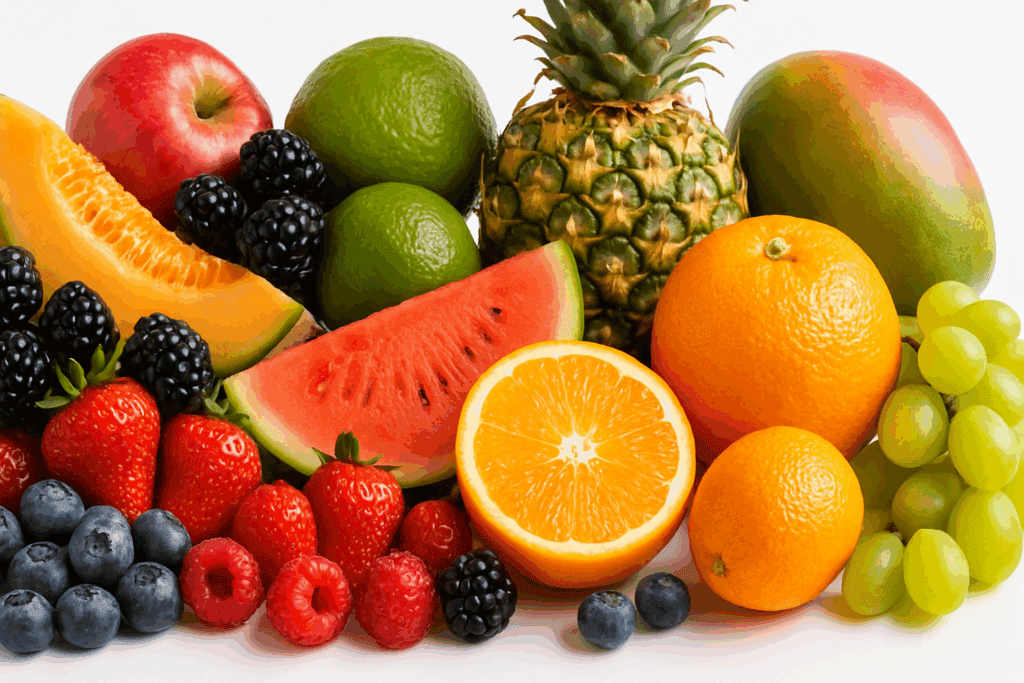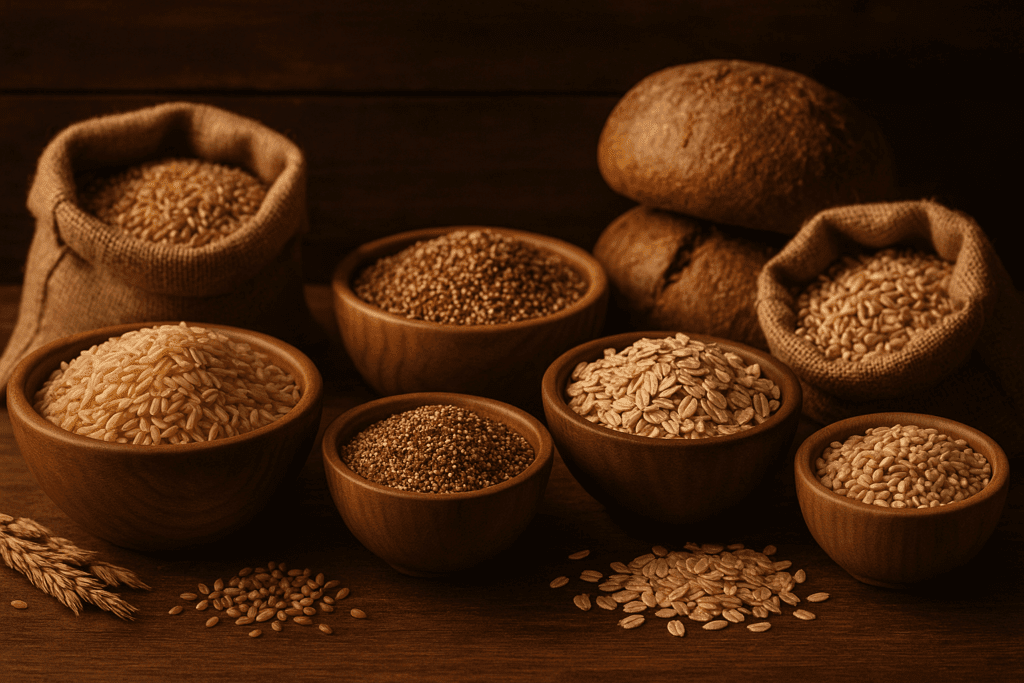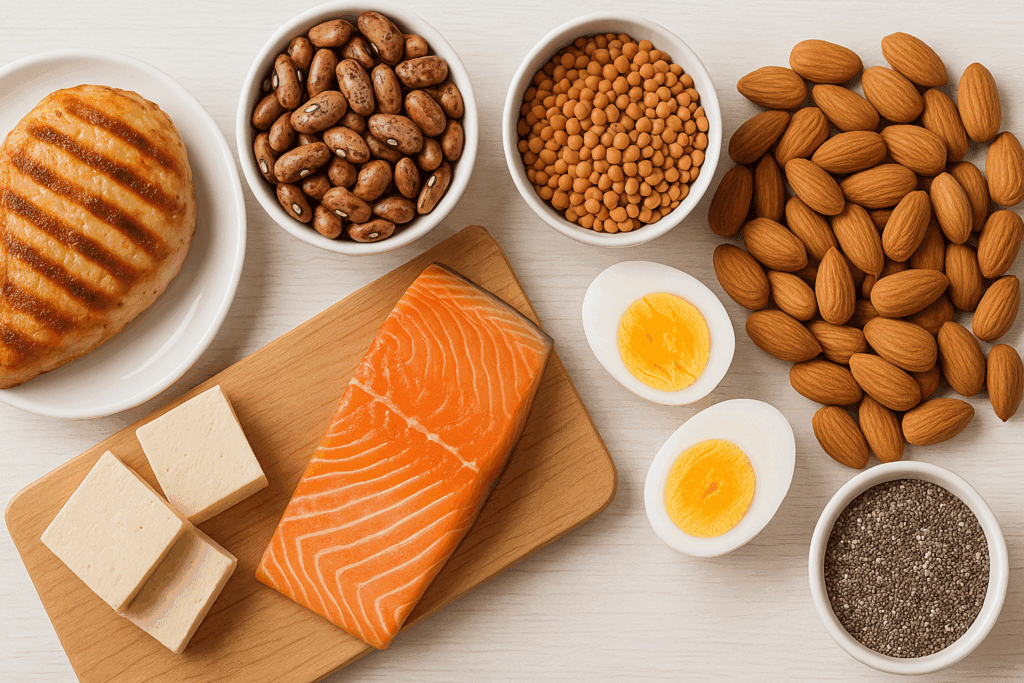In an era where nutrition information is abundant yet often contradictory, understanding the foundational principles of a healthy diet is more essential than ever. The concept of the five food groups, which has been a staple in public health education for decades, offers a scientifically validated, easy-to-understand framework for nourishing the body and supporting long-term wellness. At the heart of this model is the idea that different foods offer distinct nutritional benefits, and that consuming a balanced variety across all groups is essential for maintaining energy, supporting bodily functions, and preventing chronic disease.
You may also like: 4 Ways to Have a Healthy Diet: Expert Tips Backed by Science for Better Nutrition and Long-Term Wellness
This article takes an in-depth look at the five food groups as defined by authoritative sources such as the USDA. It also explores how the categorization of food into groups supports optimal dietary patterns, and how tools like the USDA fruit grouping chart and specific recommendations for the consumption of food help translate this knowledge into daily habits. Along the way, we’ll highlight practical applications, uncover lesser-known insights, and address common misconceptions. By the end, readers will have a thorough understanding of how these food groups contribute to overall health and how to make informed dietary choices grounded in nutritional science.
Understanding the Framework of the Five Food Groups
The five food groups consist of fruits, vegetables, grains, protein foods, and dairy. Each group contributes unique nutrients vital to human health, and together they form the basis for a balanced diet. While this categorization may seem straightforward, the science behind it reflects years of nutritional research, population health studies, and clinical trials that inform government dietary guidelines.
The food groups and consumption of food patterns derived from them are not arbitrary; they are intentionally structured to support the diverse needs of the human body. For example, fruits and vegetables provide essential vitamins, minerals, and fiber, while grains offer energy-supplying carbohydrates. Proteins support muscle repair and immune function, and dairy delivers calcium and vitamin D necessary for bone health. By integrating all five food groups into daily meals, individuals can better manage energy levels, avoid nutritional deficiencies, and reduce the risk of developing lifestyle-related diseases such as obesity, type 2 diabetes, and cardiovascular conditions.
Moreover, the five food groups are used globally as educational tools in schools, hospitals, and public health campaigns. They help individuals of all ages and backgrounds make sense of complex nutrition science. By classifying food in this way, health professionals can offer clearer dietary advice, encourage consistency in food labeling, and facilitate dietary planning for populations with different health goals.

The Fruit Group: Nature’s Nutrient-Dense Powerhouse
Fruits are rich in a wide range of nutrients, including dietary fiber, vitamin C, potassium, and various antioxidants. They play a critical role in preventing inflammation, boosting immune function, and supporting cellular health. The USDA fruit grouping chart provides a more granular classification of this group by subdividing fruits into categories such as citrus, berries, melons, and tropical fruits. This allows for a more nuanced understanding of the nutritional diversity within the fruit group.
One of the most effective ways to ensure a balanced intake is by incorporating a variety of fruits across these subcategories. The USDA recommends that individuals consume whole fruits more often than fruit juices, due to the higher fiber content and lower glycemic load of whole fruits. Understanding the different components of the USDA fruit grouping chart can also aid in meal planning by revealing which types of fruits are rich in specific nutrients. For instance, berries are high in polyphenols and flavonoids, while citrus fruits provide an abundance of vitamin C.
To further refine one’s diet, it is helpful to consider 10 foods in the fruit group that are both nutrient-dense and versatile in recipes. Examples include apples, oranges, bananas, blueberries, strawberries, grapes, mangoes, kiwis, pomegranates, and watermelon. These fruits not only offer a variety of textures and flavors but also contribute to different health benefits, from heart health to digestive wellness. Integrating these into your daily routine supports a vibrant, balanced approach to nutrition.

Vegetables: The Cornerstone of Preventive Nutrition
Vegetables are widely regarded as one of the most essential components of a healthy diet due to their high concentration of micronutrients and phytochemicals. The vegetable food group includes a diverse range of items, typically categorized into subgroups such as dark leafy greens, red and orange vegetables, legumes (like beans and peas), starchy vegetables, and others. Each subgroup contributes specific nutrients, and rotating among them ensures nutritional completeness.
Dark leafy greens such as spinach, kale, and collard greens are particularly rich in folate, iron, calcium, and vitamin K. Meanwhile, red and orange vegetables like carrots, sweet potatoes, and bell peppers are excellent sources of beta-carotene, which the body converts to vitamin A. Legumes are unique in that they contribute both to the vegetable and protein groups, offering plant-based protein, fiber, and iron. Starchy vegetables such as corn and potatoes provide a source of complex carbohydrates and energy.
Consuming a variety of vegetables has been consistently linked with lower rates of chronic disease, including hypertension, certain cancers, and age-related cognitive decline. Including vegetables in each meal—either raw, steamed, roasted, or blended into soups and smoothies—is a practical way to meet dietary recommendations. The food groups and consumption of food strategies that emphasize vegetable diversity can help individuals not only meet their micronutrient needs but also maintain a healthy weight and improve gut health through increased fiber intake.
Grains: Energy and Nutrient Foundations for the Body
Grains are a foundational food group that primarily provides carbohydrates, the body’s preferred energy source. They also supply B vitamins, iron, magnesium, and selenium. The grain group is typically divided into whole grains and refined grains, with dietary guidelines strongly favoring the former due to their higher nutrient content and fiber.
Whole grains such as brown rice, quinoa, oats, barley, and whole wheat retain all parts of the grain kernel—the bran, germ, and endosperm—which means they offer more complete nutrition. In contrast, refined grains like white rice and white bread have had the bran and germ removed, which strips away much of the fiber and nutrients. Consuming mostly whole grains is associated with reduced risk of type 2 diabetes, stroke, and heart disease.
When considering the five food groups as part of a balanced diet, grains often make up a significant portion of daily caloric intake. This underscores the importance of choosing nutrient-dense grain sources. Many health-conscious individuals now explore ancient grains and lesser-known whole grain varieties as alternatives to processed grain products. These choices reflect a more holistic approach to the food groups and consumption of food models that emphasize quality as much as quantity.

Protein Foods: Building Blocks of Muscles, Hormones, and Enzymes
The protein group includes a wide range of animal- and plant-based foods that provide the amino acids necessary for cellular repair, hormone synthesis, and immune function. Sources include meats, poultry, seafood, eggs, legumes, nuts, seeds, and soy products. As with the other groups, diversity within protein sources is key to achieving nutritional balance and meeting dietary preferences or restrictions.
Animal-based proteins typically offer complete proteins, meaning they contain all nine essential amino acids. These include options such as lean beef, chicken breast, turkey, salmon, tuna, and eggs. However, plant-based proteins are gaining increased attention for their health benefits and environmental sustainability. Legumes like lentils and chickpeas, soy products such as tofu and tempeh, and seeds like chia and flaxseed are nutrient-rich choices that also provide fiber and healthy fats.
Current dietary patterns show a growing interest in plant-forward diets that emphasize a balance between animal and plant protein sources. This shift not only supports heart health and metabolic function but also aligns with broader wellness goals. Within the framework of the five food groups, protein foods represent a category where personalization is especially important. Tailoring intake to activity level, age, health status, and dietary philosophy ensures that protein supports optimal physiological functioning.
Dairy: A Key Contributor to Bone and Hormonal Health
Dairy products offer essential nutrients such as calcium, vitamin D, phosphorus, potassium, and high-quality protein. These nutrients are vital for bone development, muscular function, and hormonal regulation. The dairy group includes milk, cheese, yogurt, and fortified plant-based alternatives that meet similar nutritional standards. Importantly, lactose-free options and fortified non-dairy beverages expand accessibility for those with lactose intolerance or dietary restrictions.
The inclusion of dairy in the five food groups underscores its importance in maintaining skeletal integrity, particularly during adolescence and later in life. Studies show that regular consumption of dairy is linked to higher bone mineral density and a reduced risk of osteoporosis. Yogurt and kefir also contribute to gut health through their probiotic content, making them functional foods within this group.
In recent years, plant-based dairy alternatives have become more prevalent, prompting the USDA and other health authorities to clarify which of these products meet the nutritional criteria to be included in the dairy group. Fortified soy milk, for instance, is recognized as an equivalent to cow’s milk due to its comparable protein, calcium, and vitamin D levels. This evolving landscape highlights the need to understand the distinctions within the USDA fruit grouping chart and similar categorization tools, ensuring that substitutions still fulfill the intended nutritional role.

Balancing the Five Food Groups for Long-Term Health
The ultimate goal of understanding the five food groups is to apply that knowledge in a way that promotes holistic, sustainable health. This involves not only recognizing the unique contributions of each group but also finding harmony in their consumption. The USDA’s MyPlate model offers a visual representation of how to proportion each group throughout the day, encouraging meals that include a balance of fruits, vegetables, grains, proteins, and dairy.
Practical applications of this model vary based on age, gender, activity level, and health status. For instance, athletes may require higher protein and carbohydrate intake, while older adults might prioritize calcium and vitamin D from the dairy group. Cultural and personal preferences also play a significant role in food selection, and dietary models must be adaptable to accommodate these factors while maintaining nutritional adequacy.
Using tools like the USDA fruit grouping chart can enhance meal planning by highlighting variety within a single food group. Incorporating 10 foods in the fruit group, for example, ensures that meals remain interesting and nutritionally diverse. Ultimately, the goal is not rigid adherence to guidelines but rather an informed, flexible approach to eating that aligns with personal values and health goals.

Frequently Asked Questions: The Five Food Groups and Their Role in Better Nutrition
1. How can understanding the USDA fruit grouping chart enhance your dietary planning?
The USDA fruit grouping chart offers a more detailed breakdown of fruit categories, allowing individuals to optimize nutrient diversity within their diets. While the five food groups generally encourage daily fruit intake, this chart helps identify which fruits offer specific vitamins, antioxidants, or phytochemicals. For example, tropical fruits like mangoes and papayas are rich in beta-carotene, while berries supply anthocyanins that support cognitive health. Using the USDA fruit grouping chart as a planning tool can also aid in meal rotation, reduce taste fatigue, and inspire seasonal eating. This deeper awareness of the food groups and consumption of food patterns ensures that the fruit group is not just included, but leveraged to its full nutritional potential.
2. What are some lesser-known but highly beneficial foods within the fruit group?
Beyond commonly consumed fruits like apples and bananas, there are numerous lesser-known options that can diversify your intake. Dragon fruit, black currants, guava, and starfruit are excellent examples of fruits rich in unique antioxidants, fiber, and micronutrients. Incorporating these into your rotation of 10 foods in the fruit group can enhance your intake of vitamin C, potassium, and rare polyphenols. These lesser-known fruits may also have lower glycemic loads, making them ideal for individuals managing blood sugar. Diversifying within the fruit group adds both flavor and function to your engagement with the five food groups.
3. Can digital meal-tracking apps improve adherence to the five food groups?
Yes, digital nutrition apps can significantly enhance how individuals adhere to guidelines for the five food groups. These tools often include barcode scanners, photo-based meal logging, and customized reminders, making it easier to evaluate daily intake. Some platforms even allow users to track servings from each group, including cross-referencing the USDA fruit grouping chart to ensure variety. For people aiming to improve food groups and consumption of food behaviors, this technology bridges intention with action. As such, apps offer a user-friendly way to align modern lifestyles with established dietary frameworks.
4. How does socioeconomic status influence the ability to follow the five food groups model?
Socioeconomic factors play a major role in determining how easily individuals can access and consume foods from all five food groups. Lower-income households often face barriers such as limited access to fresh produce or whole grains, which can distort food groups and consumption of food toward calorie-dense, nutrient-poor items. Programs that subsidize 10 foods in the fruit group or offer incentives for purchasing whole grains and lean proteins are crucial for closing this gap. Nutrition education must also be tailored to socioeconomic contexts to be effective and respectful. Without addressing these broader influences, public health messages about the five food groups may fall short.
5. How are the five food groups applied differently across various cultures?
Cultural dietary patterns often reflect the five food groups in ways that differ from Western norms but still support balanced nutrition. For instance, legumes and lentils are protein staples in Indian cuisine, while fermented dairy products like kefir are central to Eastern European diets. The USDA fruit grouping chart may not always align with cultural food classifications, but its underlying purpose—to encourage variety within the fruit group—remains relevant. Recognizing and respecting these cultural expressions can help broaden the application of food groups and consumption of food principles globally. Culturally adaptive models make the five food groups more inclusive and sustainable.
6. What strategies can help children better engage with the five food groups?
Children are more likely to embrace the five food groups when they are actively involved in meal preparation and grocery shopping. Creating colorful snack boards that feature items from all groups—including 10 foods in the fruit group—can introduce variety in a fun and non-intimidating way. Storytelling that incorporates the USDA fruit grouping chart or cooking classes that involve multiple food groups can deepen understanding and curiosity. Schools that implement farm-to-table programs often report higher rates of vegetable and fruit consumption among students. These strategies make the food groups and consumption of food concepts tangible, interactive, and age-appropriate.
7. Are there emerging food technologies that could reshape how we categorize the five food groups?
Food science is evolving rapidly, and with it, the traditional framework of the five food groups may eventually adapt to include novel food categories. Plant-based dairy alternatives, lab-grown meats, and fortified functional foods challenge the current classification model. For example, some fortified beverages now mimic the nutrient profile of traditional dairy, prompting updates to the USDA food group guidelines. While the USDA fruit grouping chart remains a stable reference, new digital and genetic tools may eventually personalize food groups and consumption of food recommendations. These innovations aim to align dietary guidance with individual biochemistry, lifestyle, and environmental considerations.
8. What role does gut microbiome research play in redefining the five food groups?
Emerging research into the gut microbiome suggests that how we digest and absorb nutrients from each of the five food groups varies from person to person. Certain fibers in fruits and vegetables act as prebiotics, feeding beneficial bacteria, while protein fermentation can influence inflammatory pathways. Incorporating 10 foods in the fruit group that support microbiome diversity—such as pomegranates, kiwis, and berries—may enhance immune resilience. The USDA fruit grouping chart could eventually integrate microbiome-related metrics to optimize health outcomes. This evolving science has the potential to transform how we view food groups and consumption of food through a lens of individualized health.
9. How can the five food groups support mental wellness in addition to physical health?
The connection between nutrition and mental health is increasingly recognized, and the five food groups offer a structured way to support mood, cognition, and emotional balance. Fruits high in antioxidants, such as blueberries and oranges from the USDA fruit grouping chart, help reduce oxidative stress in the brain. Omega-3-rich proteins like salmon and fiber-dense grains also influence neurotransmitter production and gut-brain axis function. Maintaining a rotation of 10 foods in the fruit group can support consistent vitamin and mineral intake, aiding mental resilience. This underscores the broader impact of food groups and consumption of food choices on overall psychological well-being.
10. How might the five food groups evolve to reflect sustainability goals in the future?
Sustainability is poised to play a greater role in shaping the future of the five food groups. As environmental concerns grow, recommendations may shift toward more plant-based proteins and locally sourced items. Updates to the USDA fruit grouping chart could prioritize seasonality and carbon footprint, helping individuals make both healthful and eco-conscious choices. Reducing reliance on heavily processed items within any group also supports long-term planetary health. By aligning food groups and consumption of food practices with environmental values, we can promote a model of eating that nourishes both people and the planet.

Reflections on Food Groups and Consumption of Food: A Path Toward Better Wellness
The journey toward improved health often begins with small, deliberate choices. Understanding the five food groups—and how they interrelate to support a wide range of physiological functions—empowers individuals to take control of their nutrition with clarity and confidence. Far from being a simplistic educational tool, the categorization of food into these groups represents a distillation of decades of scientific inquiry into how dietary patterns influence health outcomes.
By embracing a model of eating that honors the food groups and consumption of food as an integrated system, we enhance not only our physical well-being but also our mental clarity, emotional balance, and overall quality of life. Whether through incorporating 10 foods in the fruit group or by consulting the USDA fruit grouping chart to diversify meal plans, the effort to eat mindfully is a lifelong investment.
What makes this approach particularly effective is its adaptability. From school cafeterias to clinical nutrition plans, the five food groups provide a universal framework that is both accessible and deeply rooted in evidence-based practice. Their relevance endures across cultures and age groups, offering a reliable foundation upon which to build sustainable dietary habits.
In a world saturated with diet fads and quick fixes, returning to the core principles of nutrition—anchored in the five food groups—offers a grounded, scientifically sound path forward. As we continue to explore new frontiers in nutritional science, these foundational truths remain indispensable. By prioritizing the food groups and consumption of food as central to our wellness journey, we reaffirm our commitment to health, vitality, and lifelong well-being.


